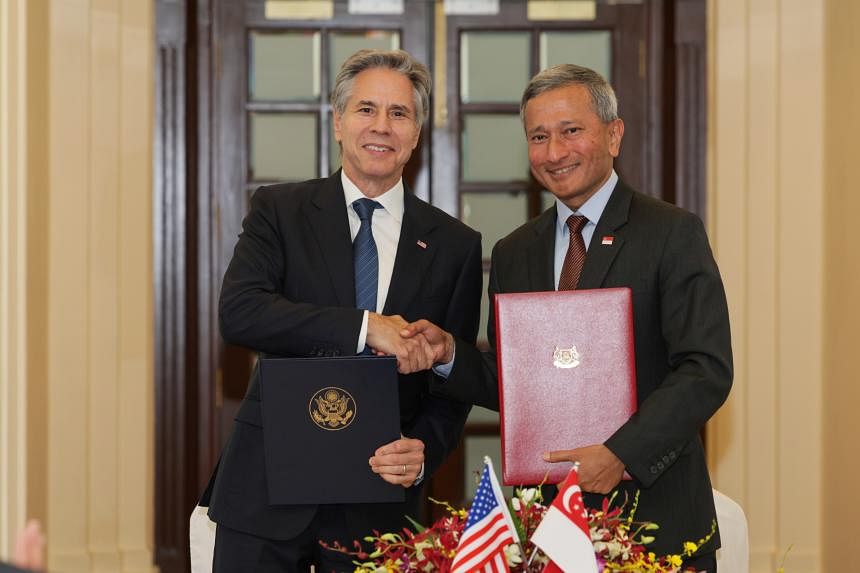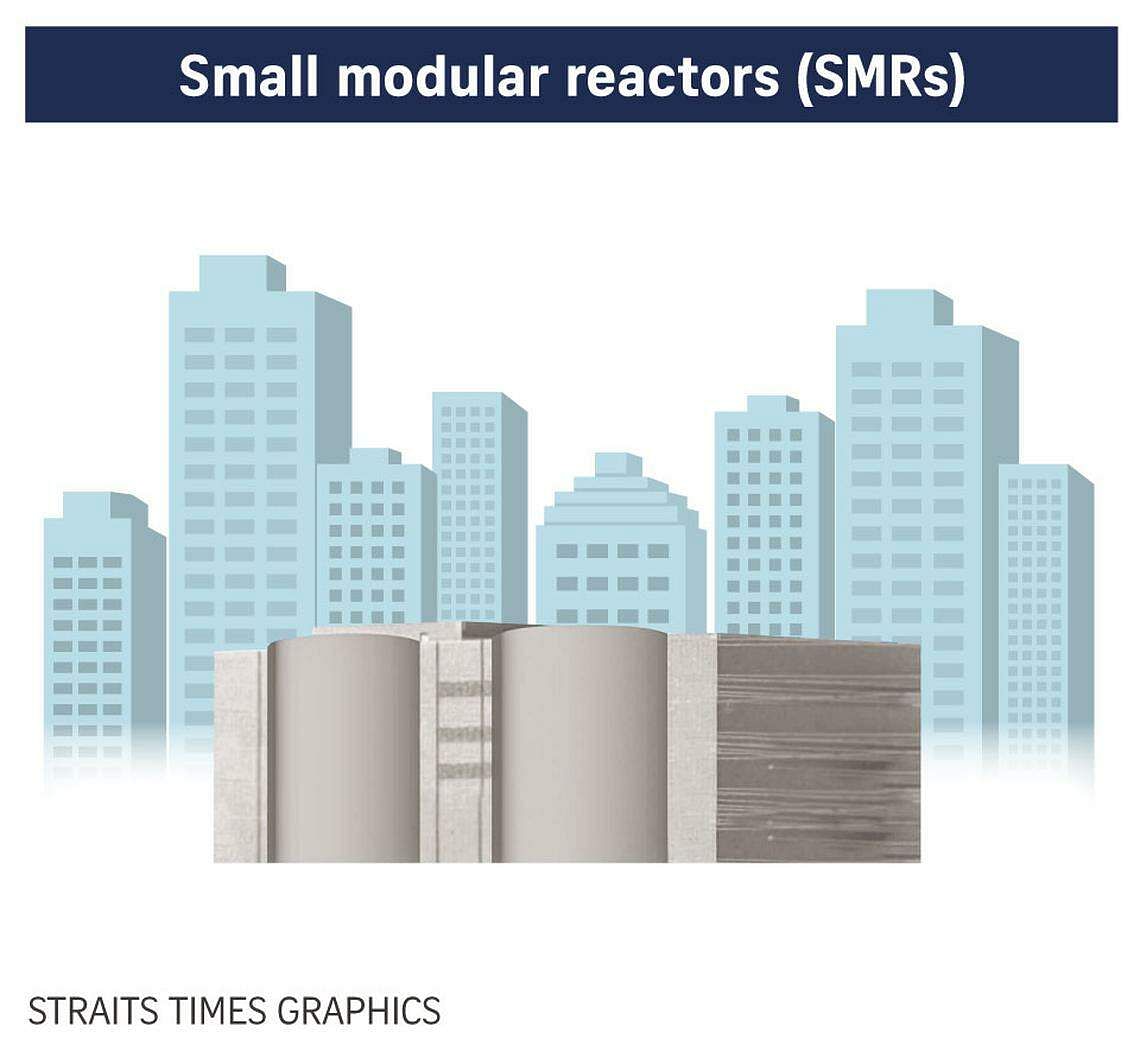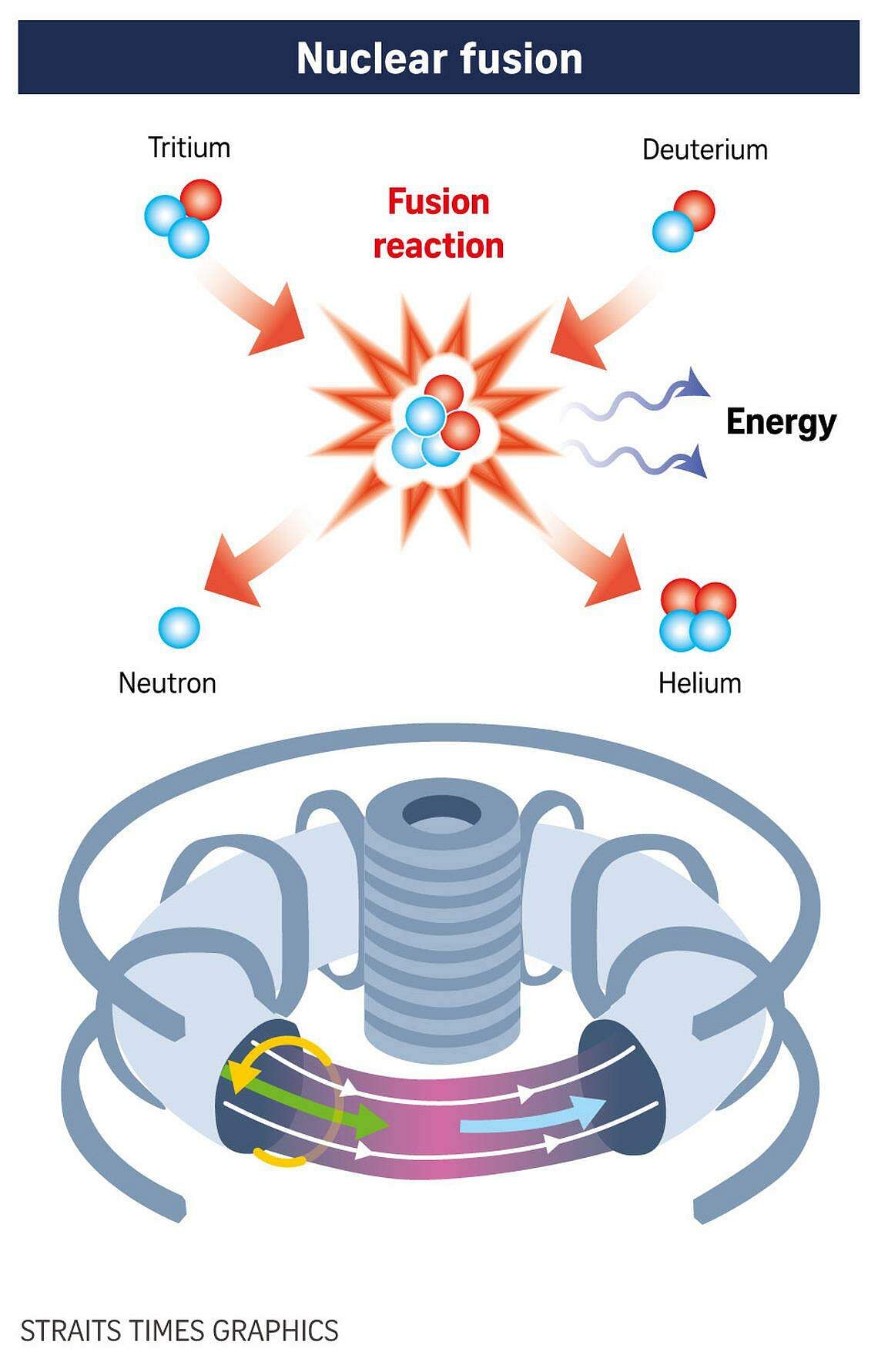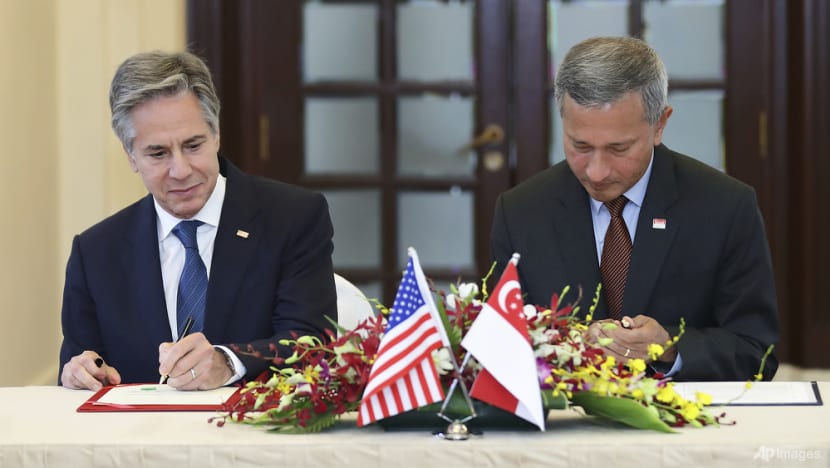https://www.straitstimes.com/singap...epen-understanding-of-nuclear-reactors-safety

Foreign Minister Vivian Balakrishnan (right) and US Secretary of State Antony Blinken shaking hands after the signing of the 123 Agreement on July 31. ST PHOTO: GIN TAY
Cheryl Tan and Shabana Begum
Updated
Jul 31, 2024, 06:53 PM
FacebookTelegram
SINGAPORE – Singapore and the United States on July 31 inked a 30-year agreement that will allow the Republic to learn more about the latest nuclear technologies and scientific research from American organisations.
The move will help Singapore make a more informed decision on nuclear power as a clean energy source, said the authorities, who stressed that no decision has been made on deploying nuclear energy.
Minister for Foreign Affairs Vivian Balakrishnan signed the 123 Agreement on Nuclear Cooperation with US Secretary of State Antony Blinken, who visited Singapore from July 30 to July 31 as part of a 11-day visit to South-east Asia.
Singapore signs agreement with US to deepen understanding of nuclear reactors, safety

Foreign Minister Vivian Balakrishnan (right) and US Secretary of State Antony Blinken shaking hands after the signing of the 123 Agreement on July 31. ST PHOTO: GIN TAY
Cheryl Tan and Shabana Begum
Updated
Jul 31, 2024, 06:53 PM
FacebookTelegram
SINGAPORE – Singapore and the United States on July 31 inked a 30-year agreement that will allow the Republic to learn more about the latest nuclear technologies and scientific research from American organisations.
The move will help Singapore make a more informed decision on nuclear power as a clean energy source, said the authorities, who stressed that no decision has been made on deploying nuclear energy.
Minister for Foreign Affairs Vivian Balakrishnan signed the 123 Agreement on Nuclear Cooperation with US Secretary of State Antony Blinken, who visited Singapore from July 30 to July 31 as part of a 11-day visit to South-east Asia.














